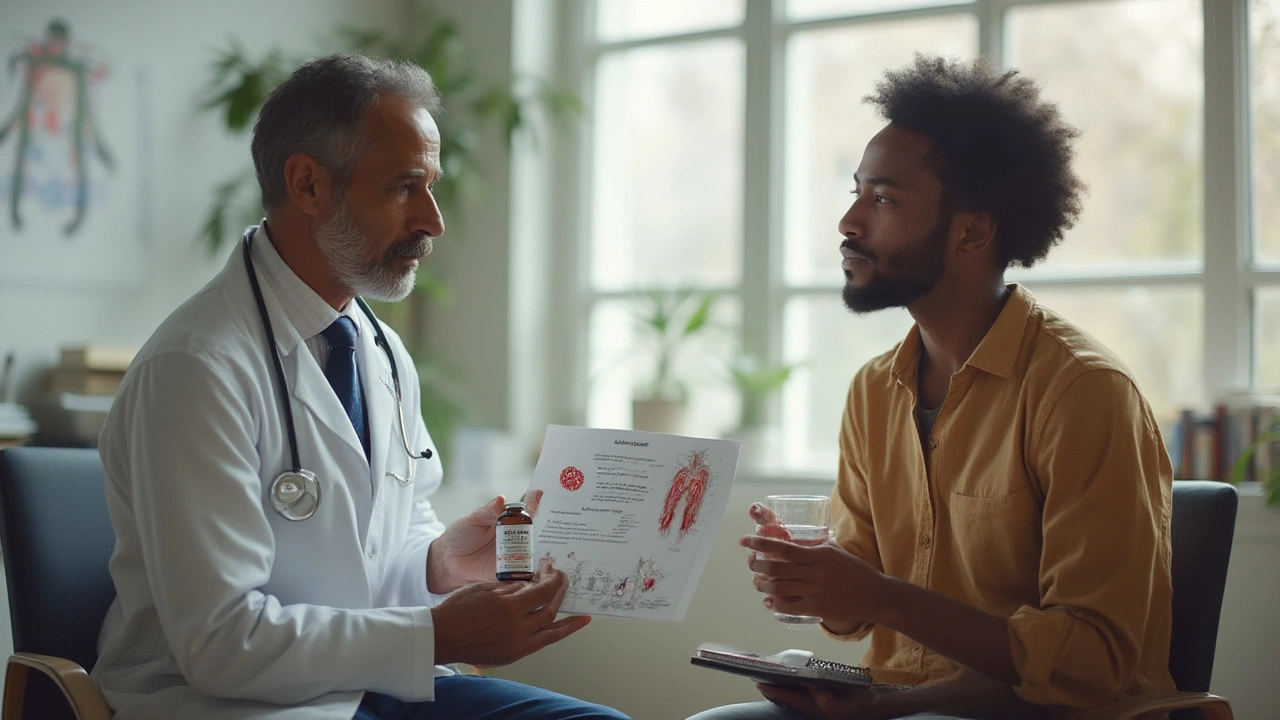TB Medication: What You Need to Know Today
If you or someone you know is facing tuberculosis, the first question is usually “what drugs will help?” In this guide we break down the core TB meds, why they’re used, and what to expect while taking them.
First‑line TB drugs and how they work
The standard regimen starts with four antibiotics taken together for two months: isoniazid, rifampin, ethambutol, and pyrazinamide. Isoniazid attacks the bacteria’s cell wall, rifampin stops it from making proteins, ethambutol disrupts its outer layer, and pyrazinamide works best in acidic environments inside the lungs. This combo, often called “HRZE,” kills most active bacteria and reduces the chance of resistance.
After the intensive phase, most patients continue with isoniazid and rifampin for another four to seven months. Sticking to the schedule is crucial—missed doses let the bug bounce back and can create drug‑resistant TB.
Managing side effects and staying on track
Every medication has trade‑offs. Isoniazid can cause mild liver irritation; rifampin may turn urine and tears orange and can interact with birth control pills; ethambutol sometimes affects vision, so regular eye checks are advised; pyrazinamide can raise uric acid levels, leading to joint pain. Most side effects are manageable, but if you notice severe nausea, jaundice, or vision loss, call your doctor right away.
Practical tips to stay adherent: use a pillbox, set daily alarms, or join a community treatment program where a health worker watches your progress. Some clinics even offer video‑observed therapy—just record yourself taking the dose.
New twists: repurposing old drugs for TB
Researchers are digging into medicines originally meant for other illnesses. For example, some fluoroquinolones used for urinary infections show promise against multi‑drug‑resistant TB. Even certain diabetes drugs, like metformin, might boost the immune response when added to standard therapy.
These repurposed options aren’t first‑line yet, but clinical trials are under way. If you have a resistant form of TB, ask your specialist whether any of these experimental combos are available through a trial or compassionate use program.
Bottom line: the backbone of TB treatment is still the classic four‑drug regimen, and taking every dose on schedule saves lives. Keep an eye on side effects, use simple tools to remember your pills, and stay informed about emerging repurposed therapies that could become part of the standard toolbox in the near future.
Isoniazid: Tuberculosis Treatment, Uses, Side Effects, and Precautions
All about isoniazid: how it fights tuberculosis, tips for safe use, potential side effects, and advice for staying healthy on this important TB medication.
